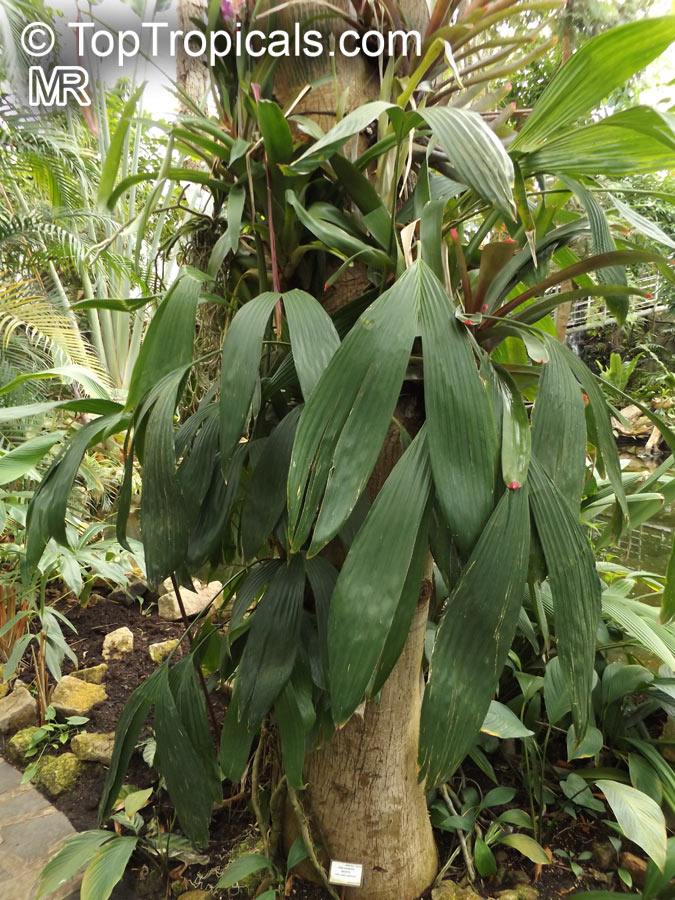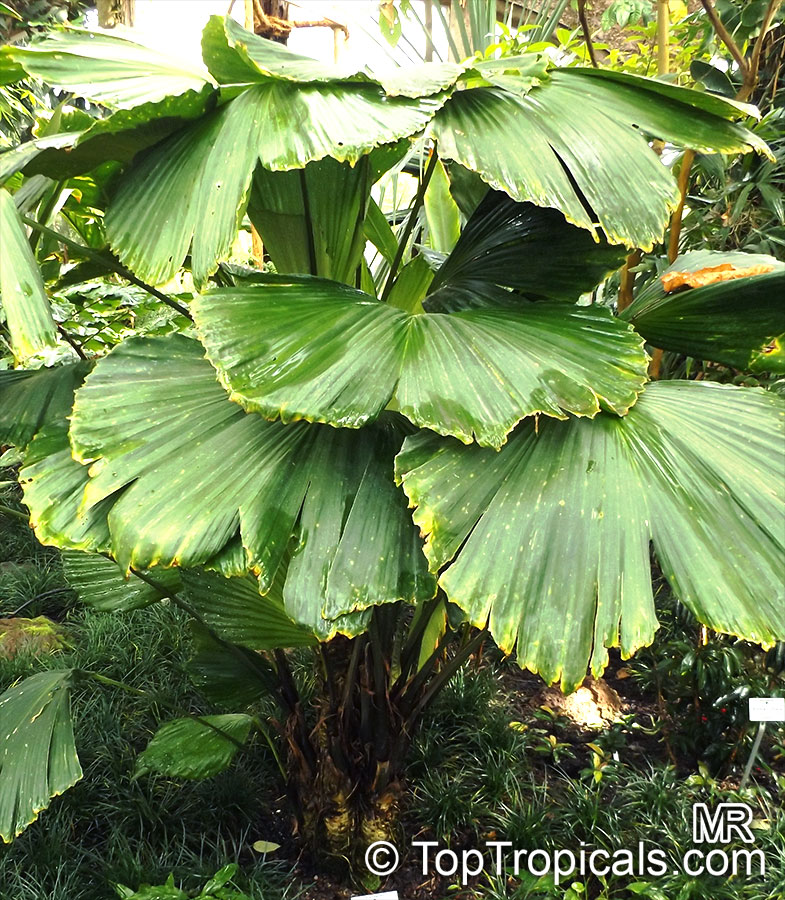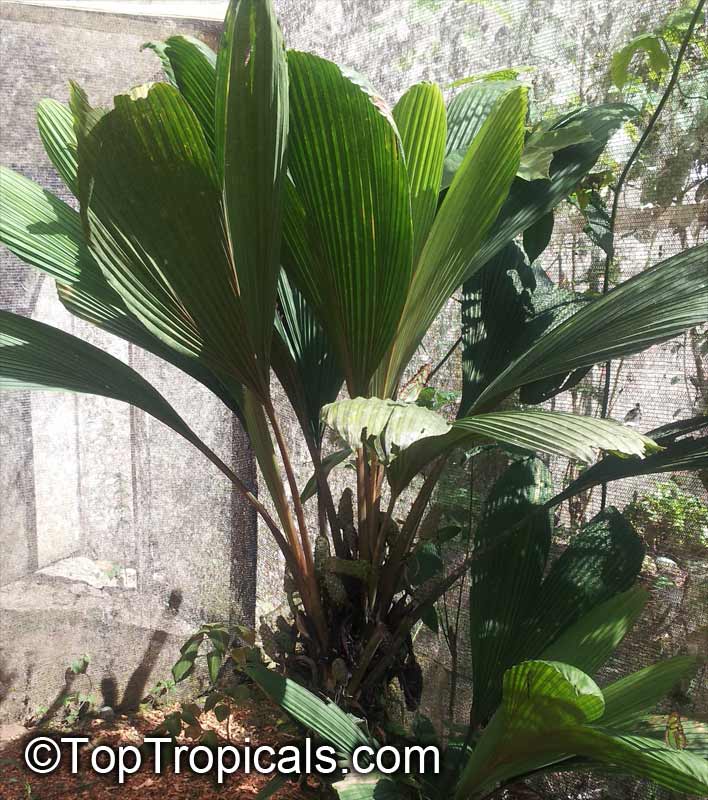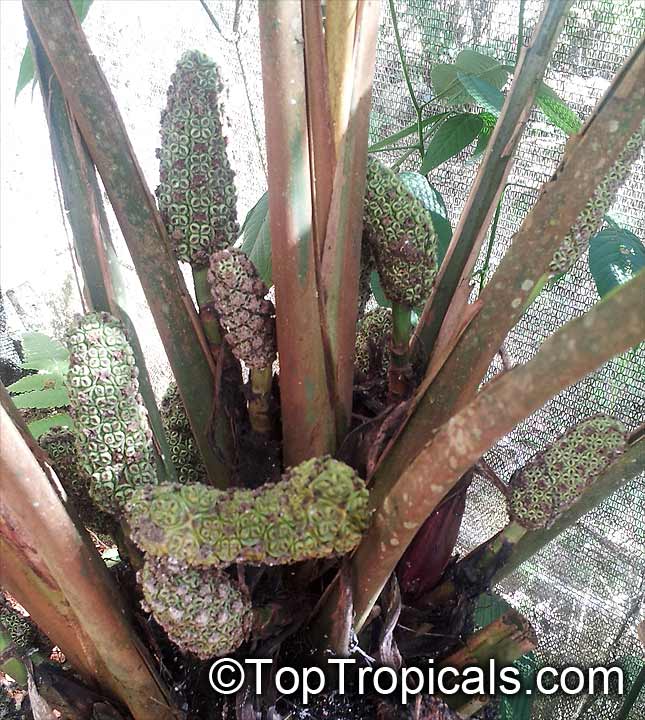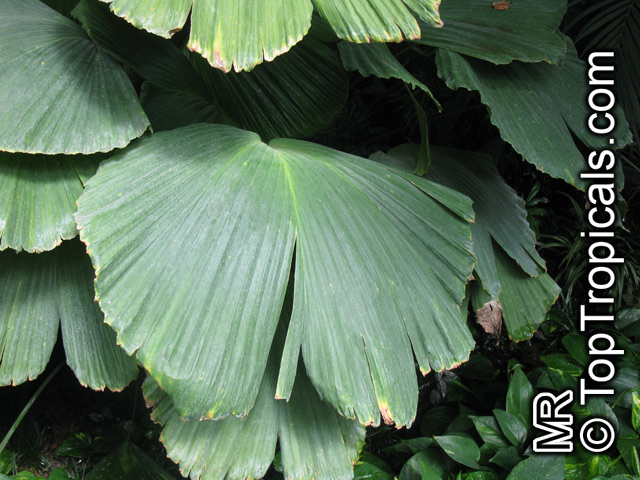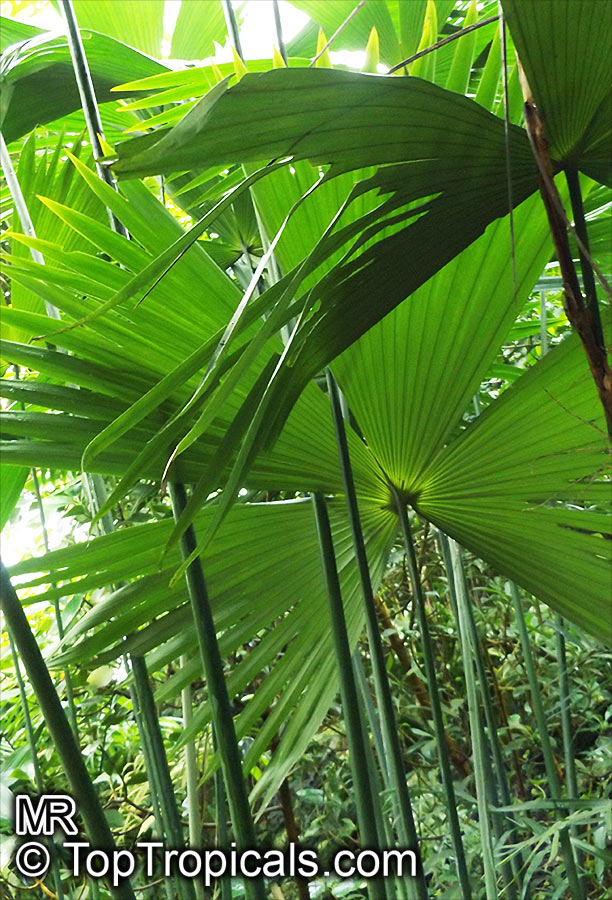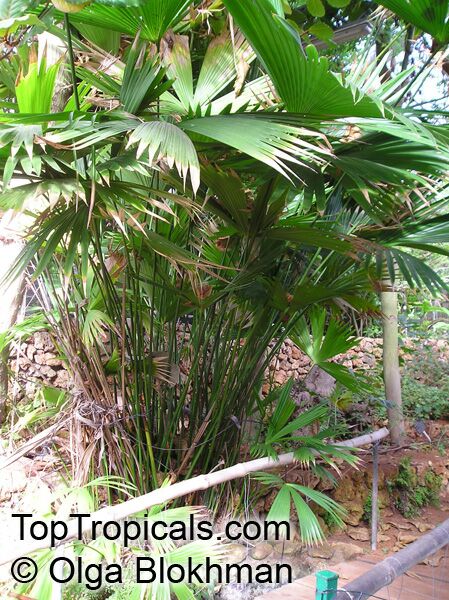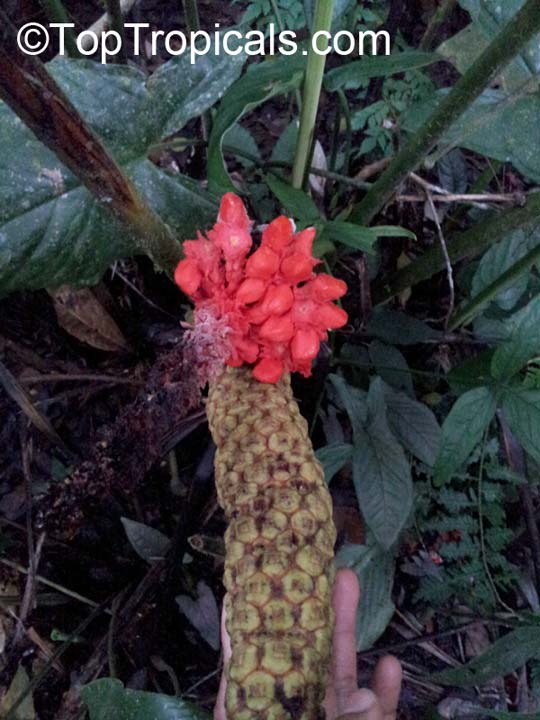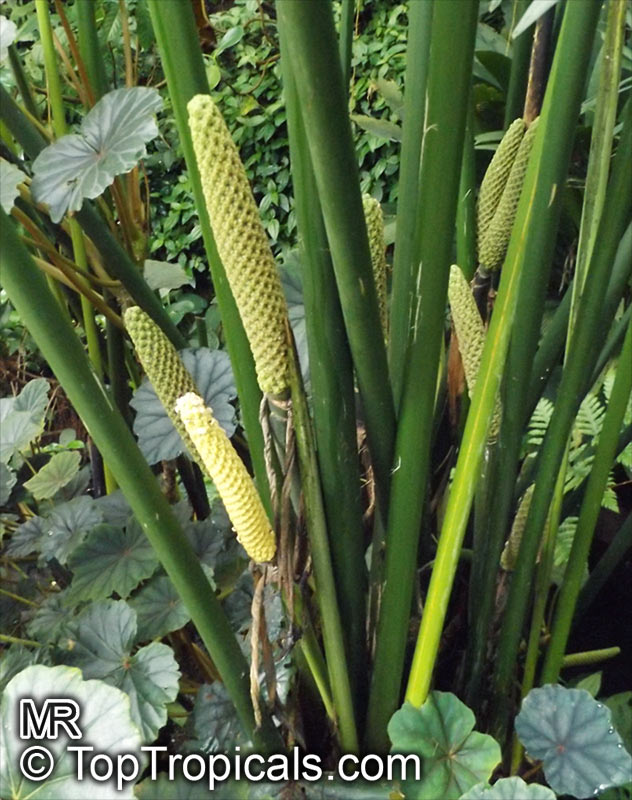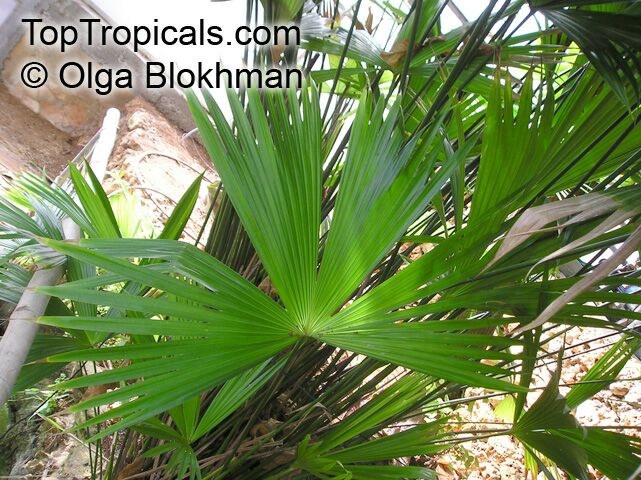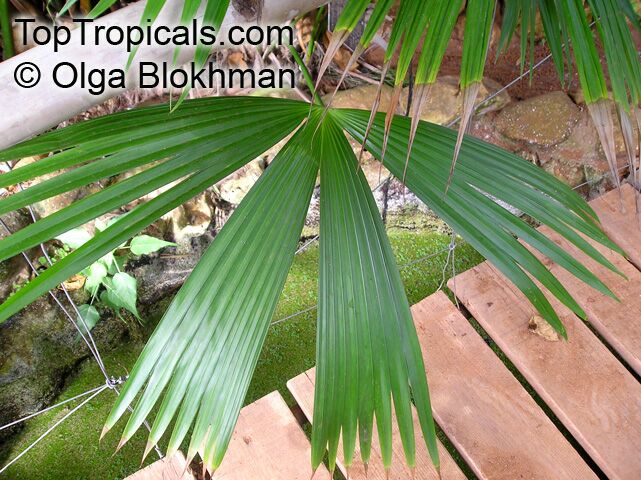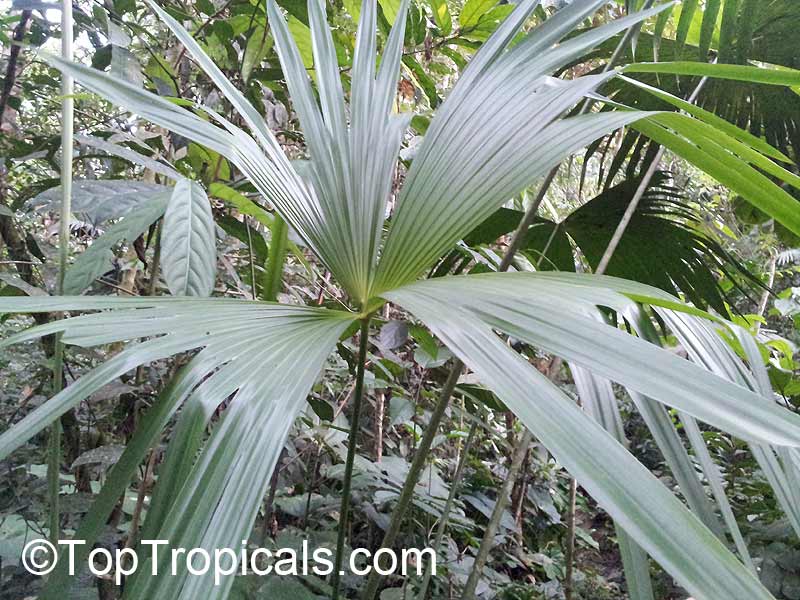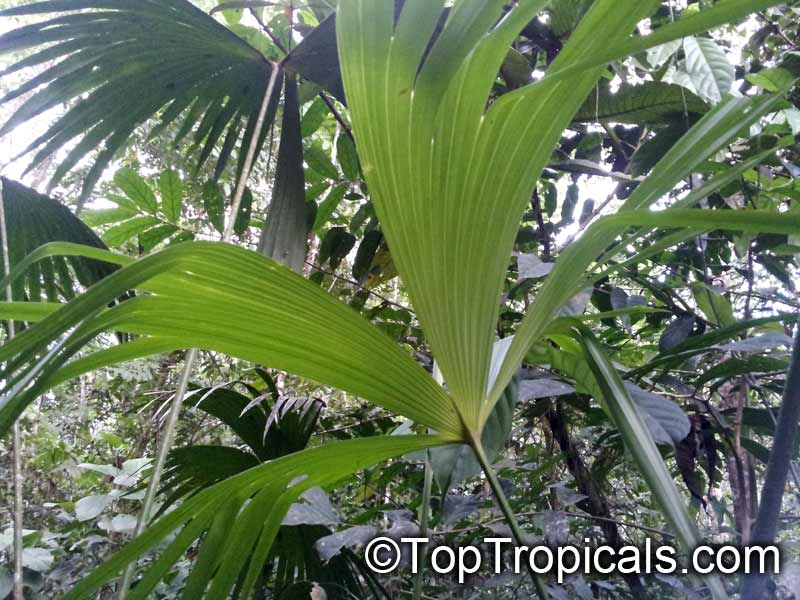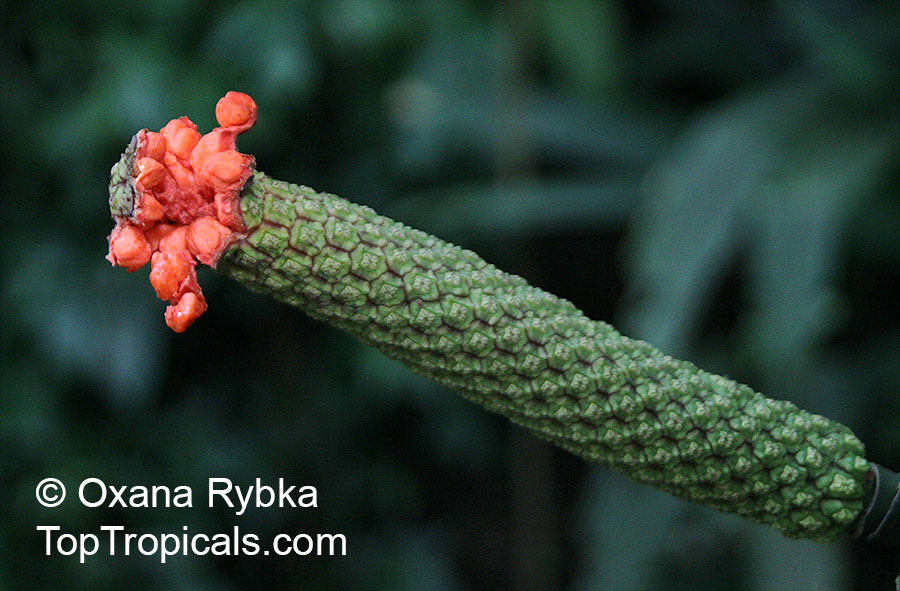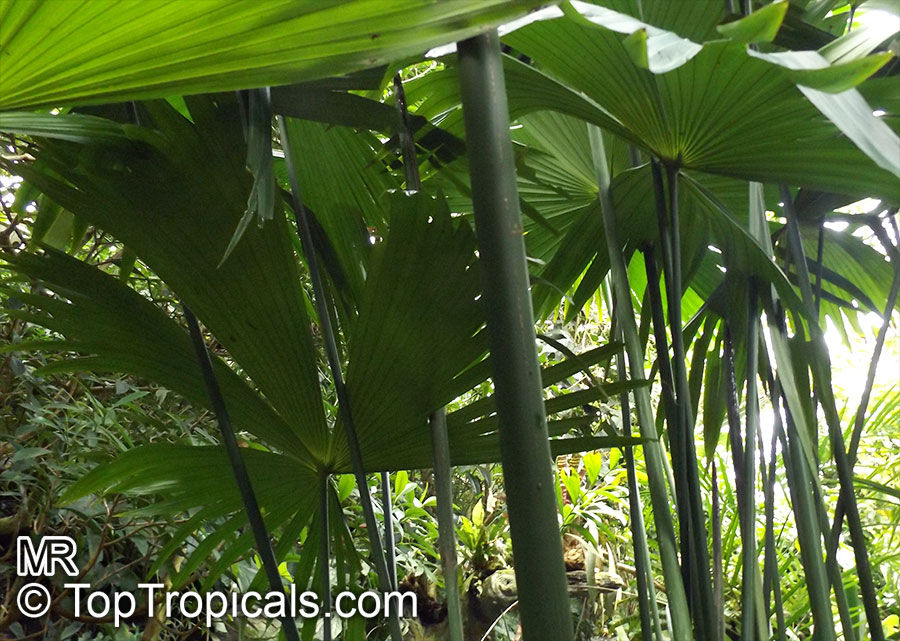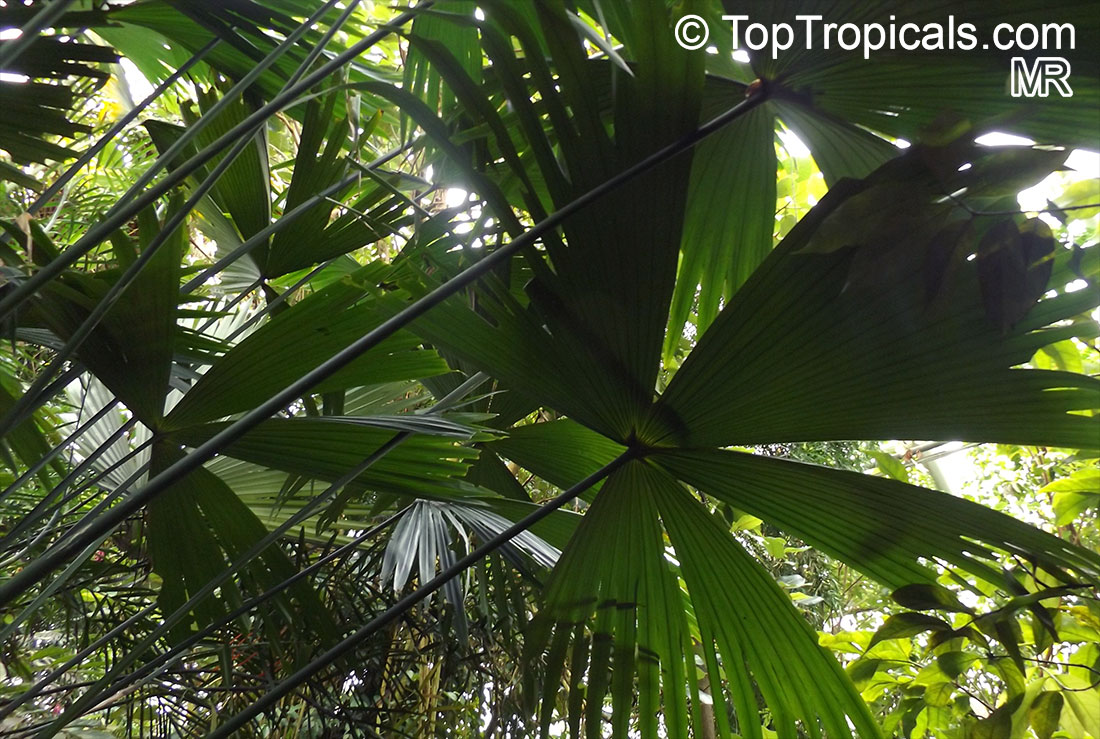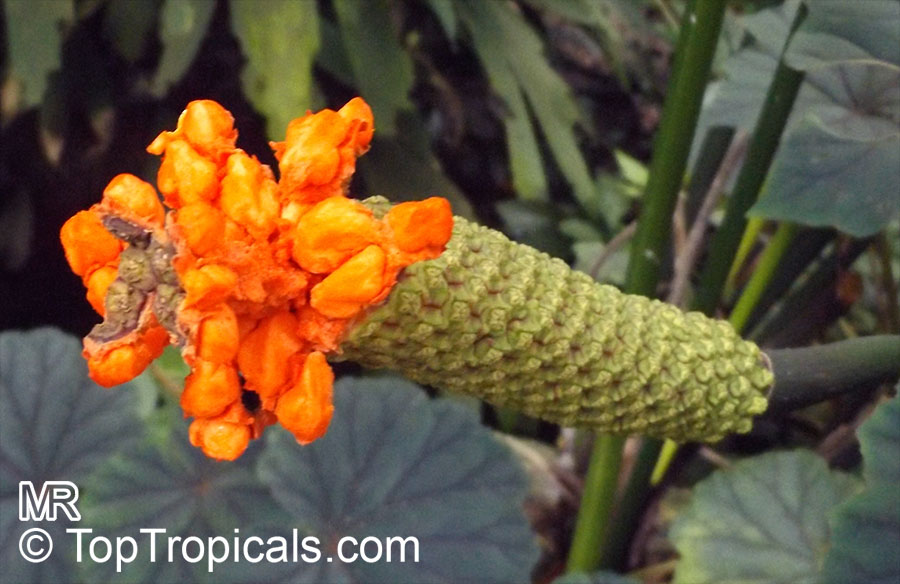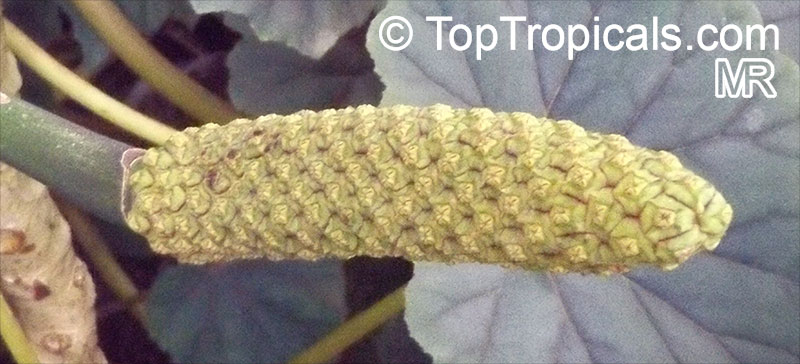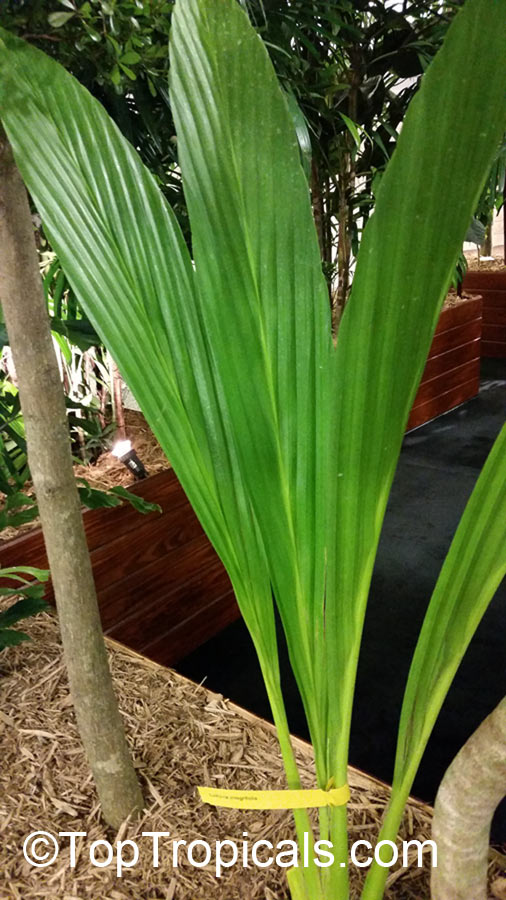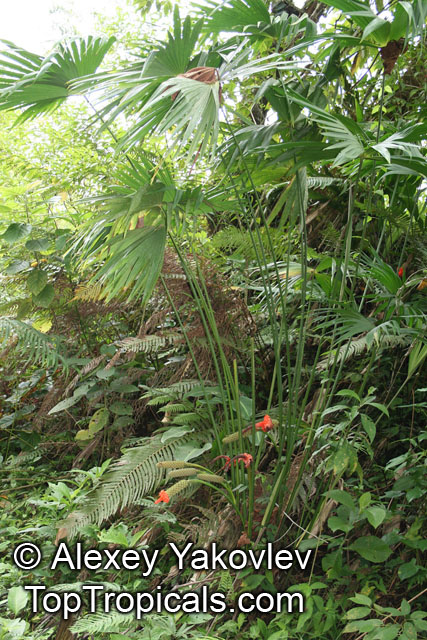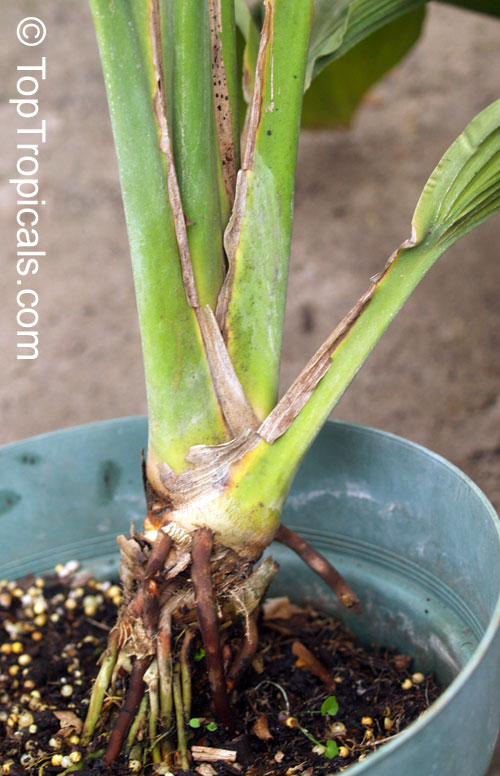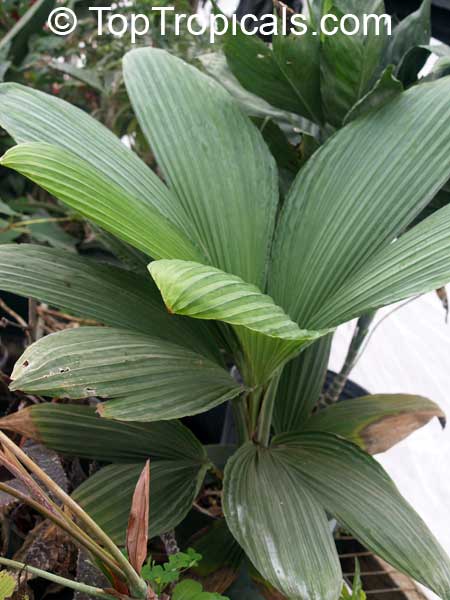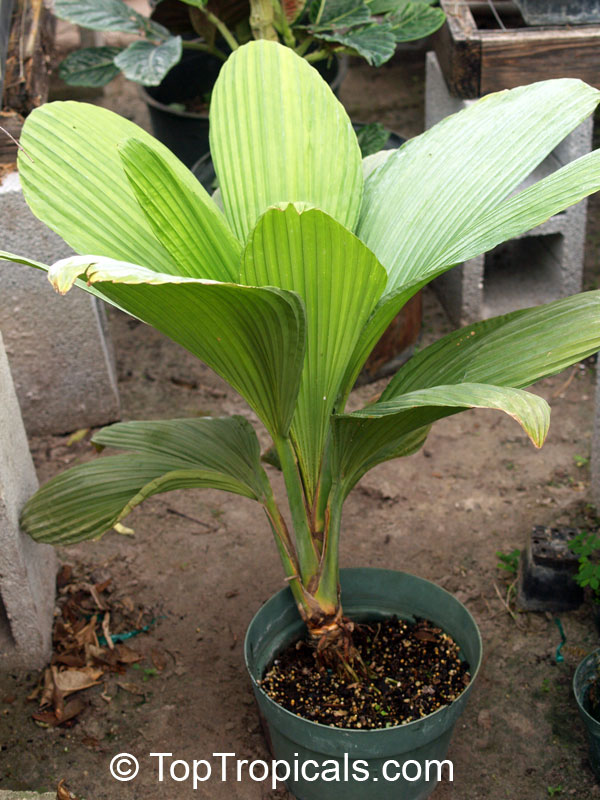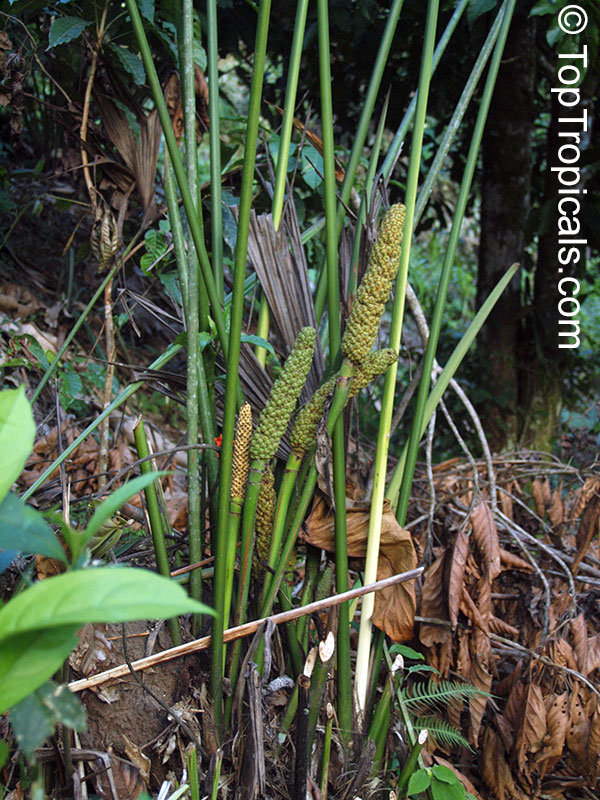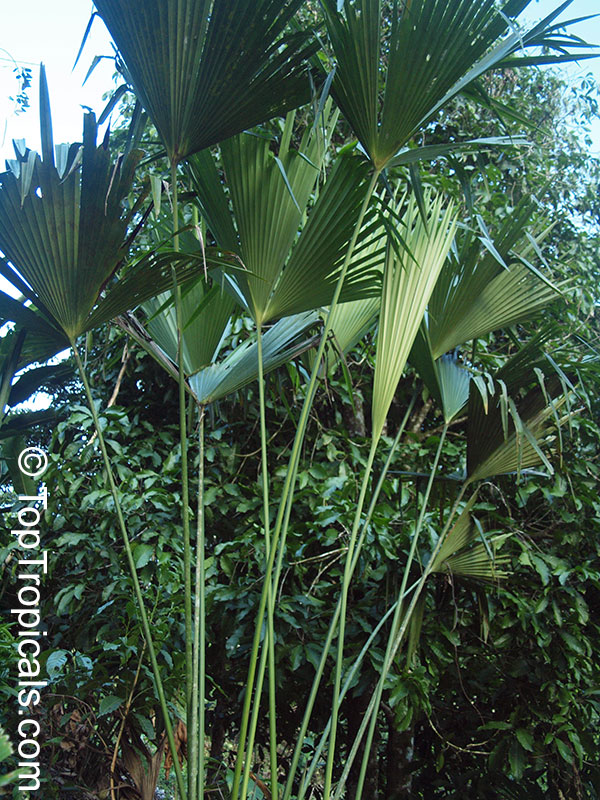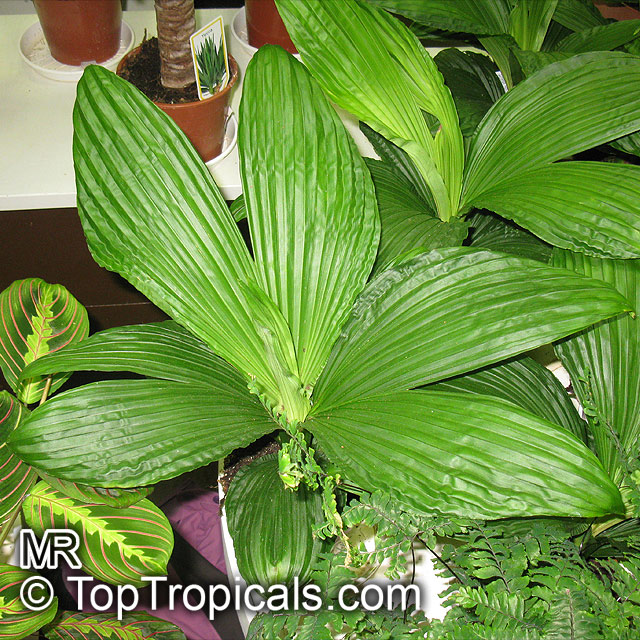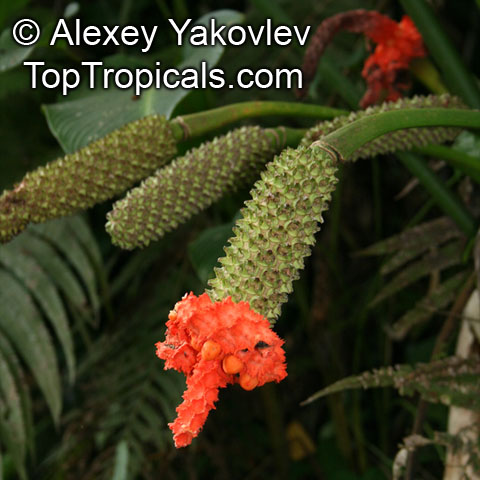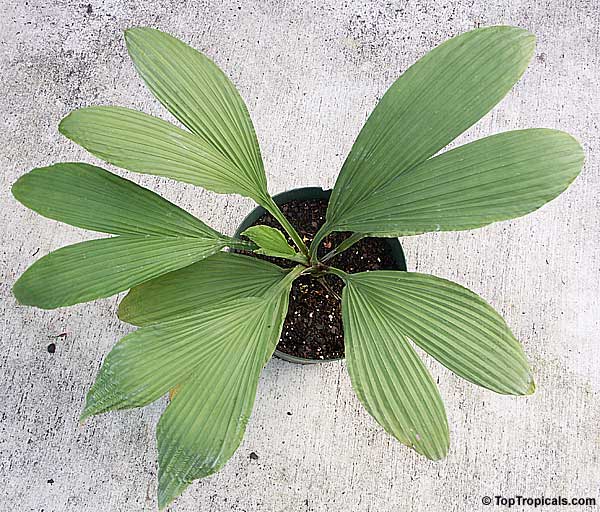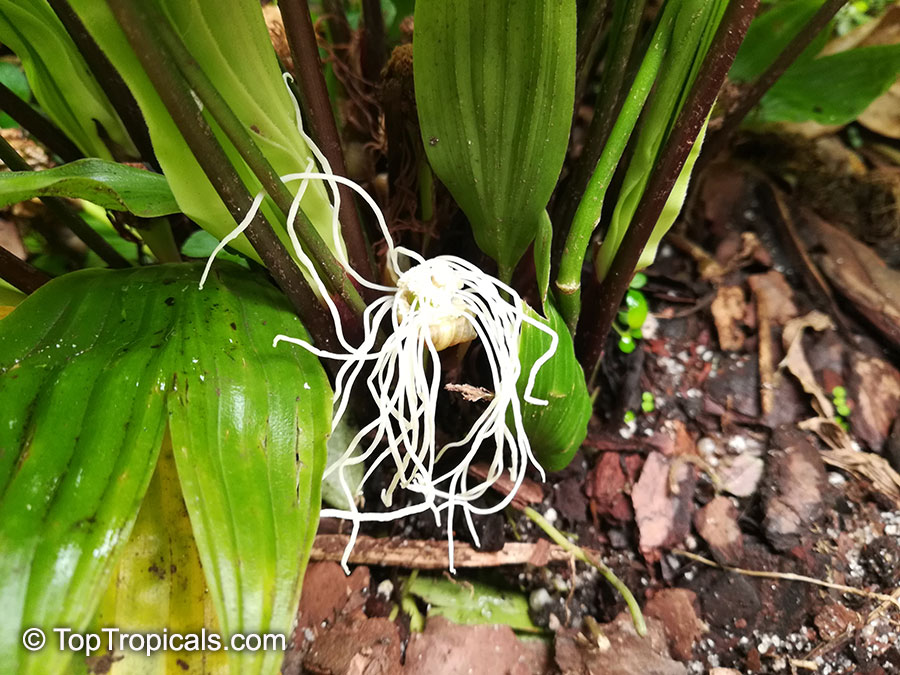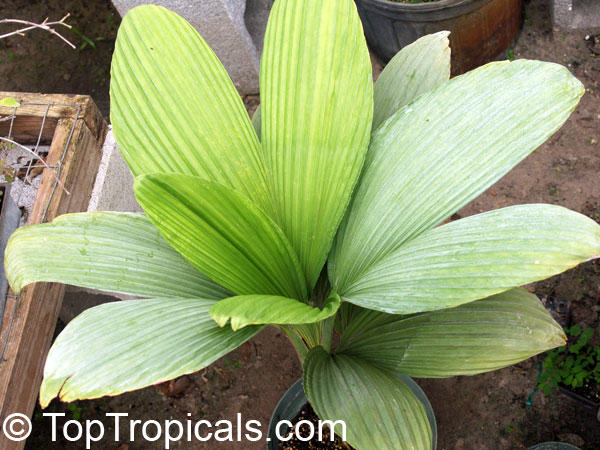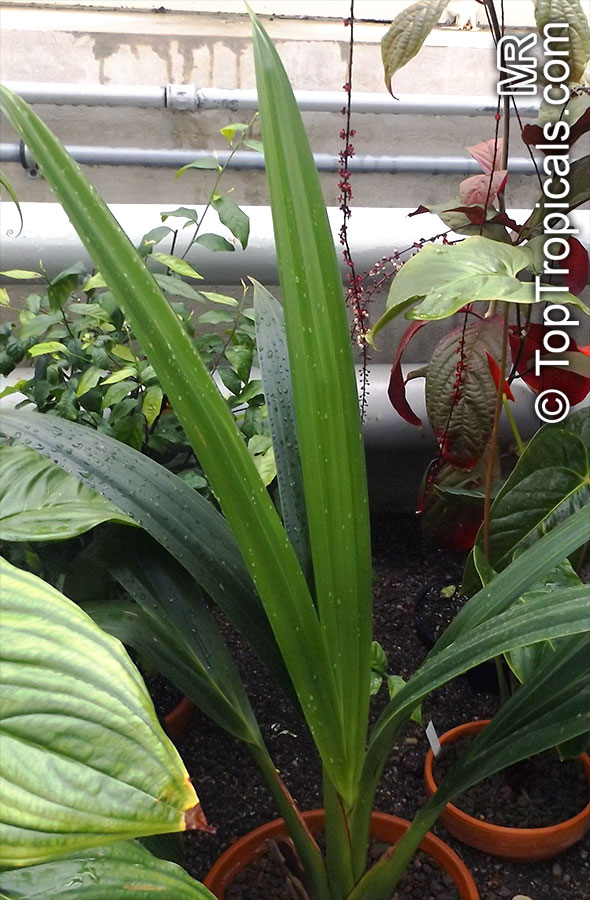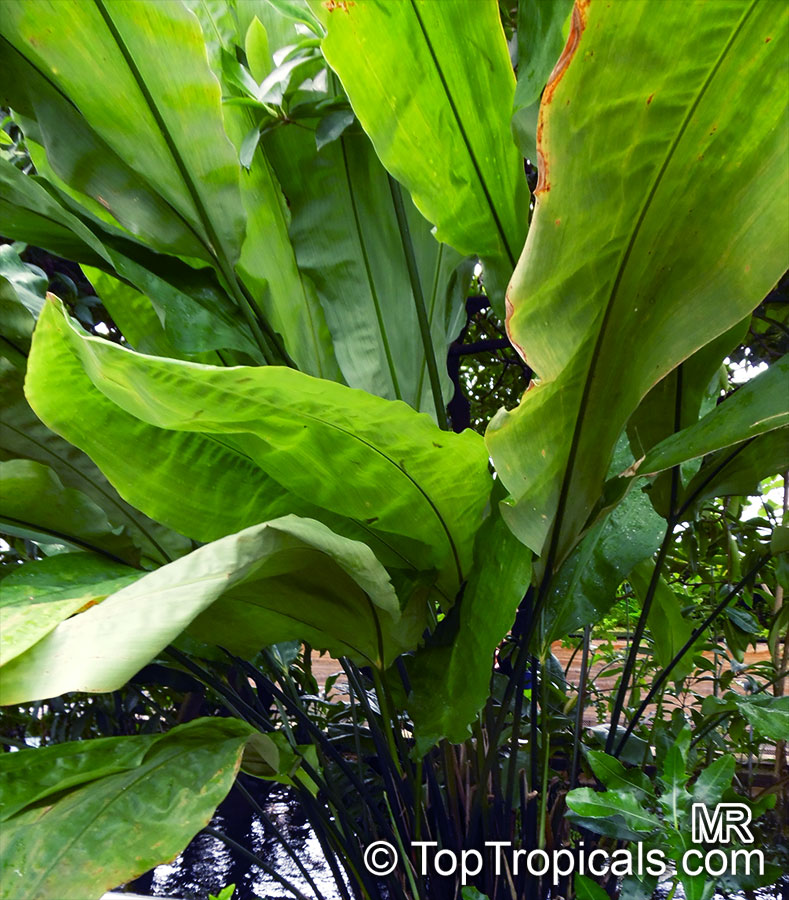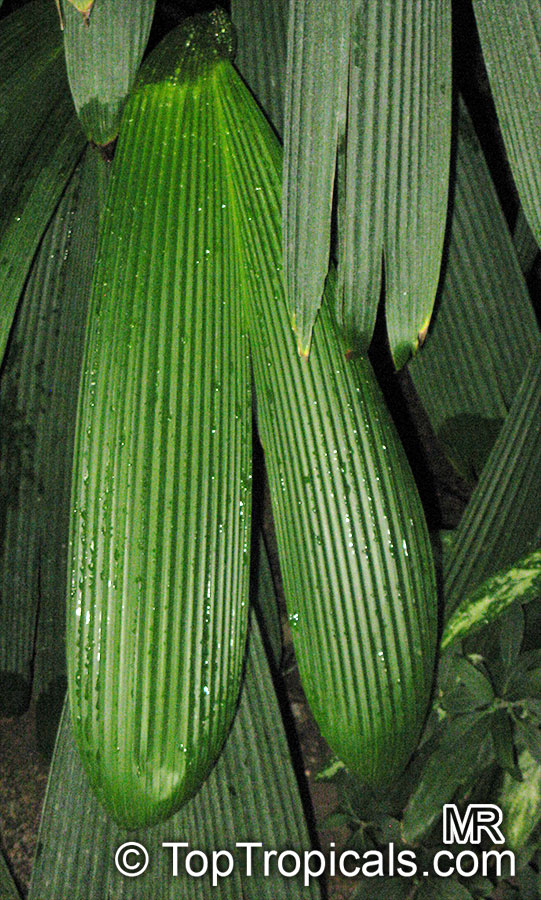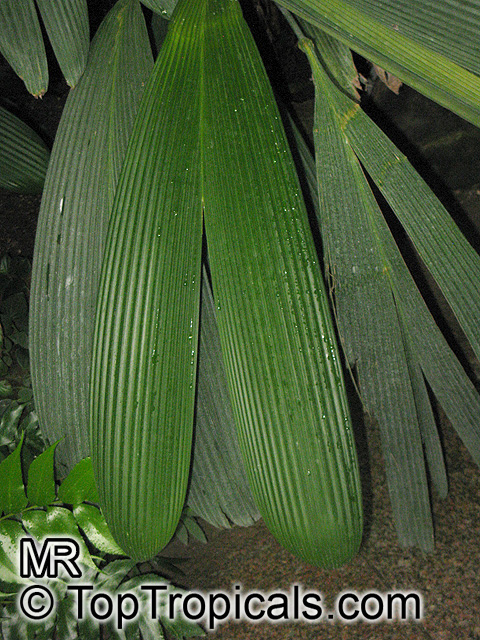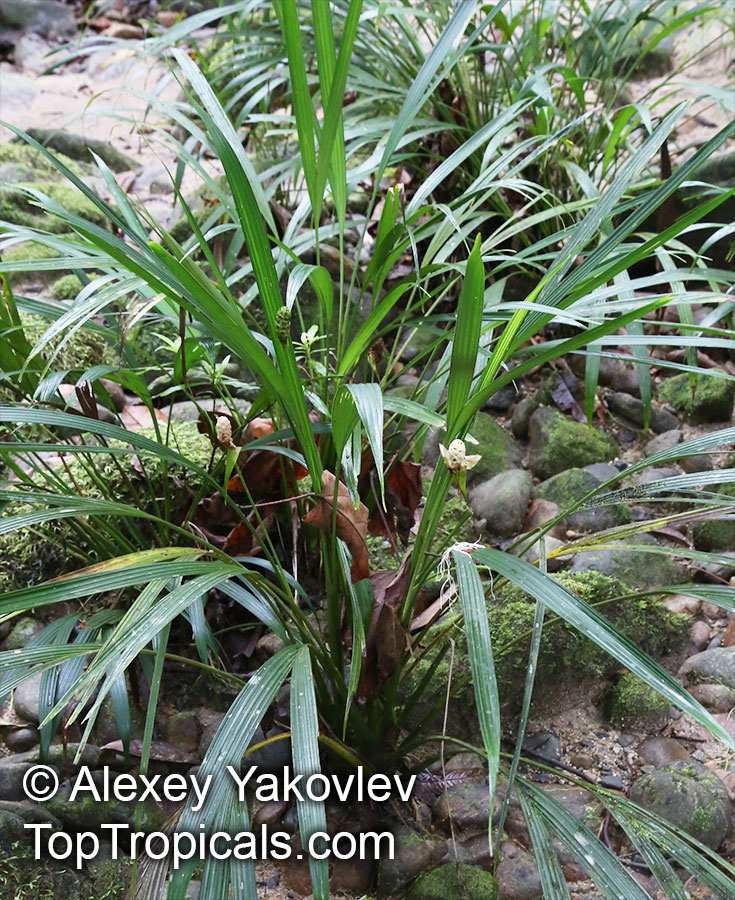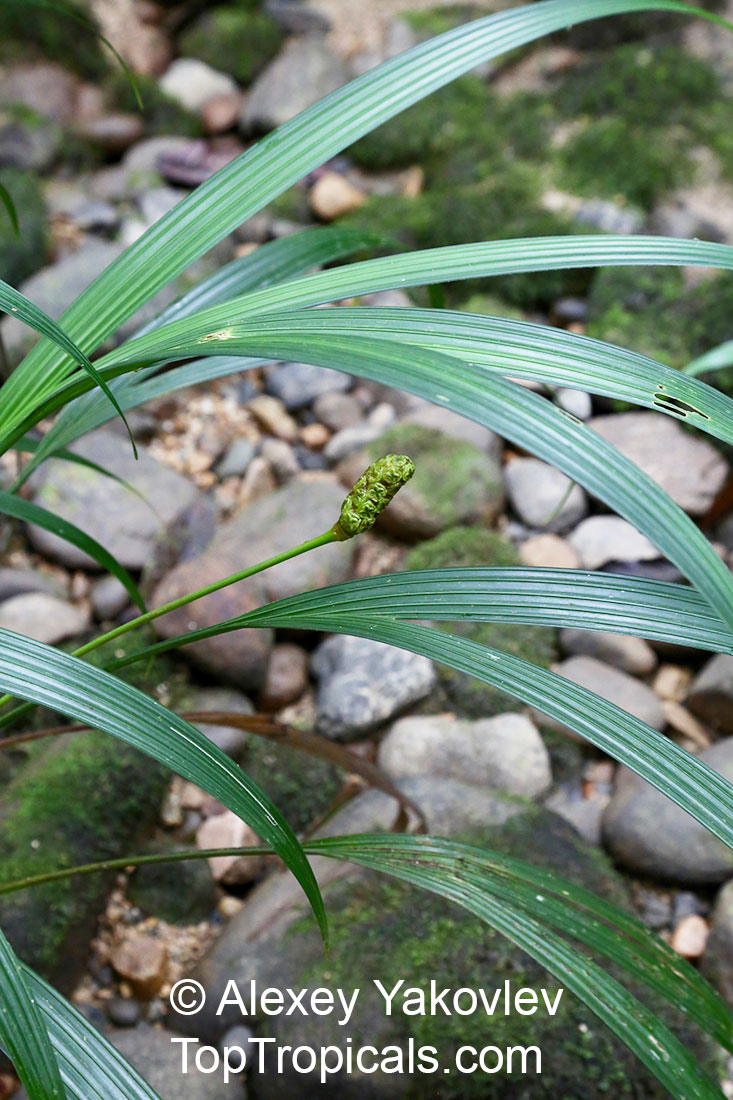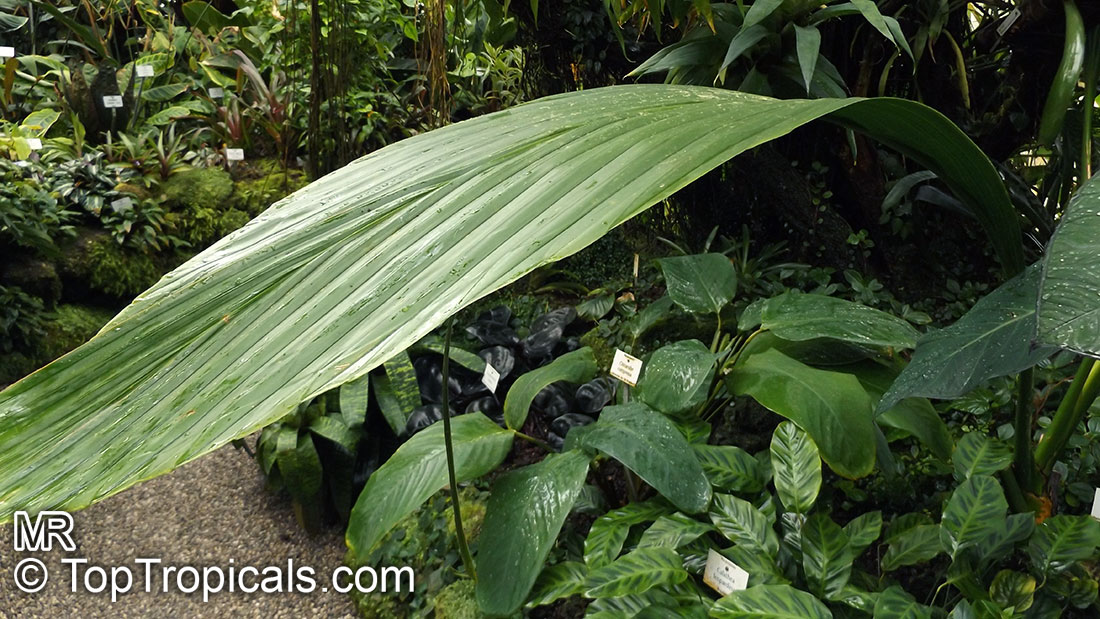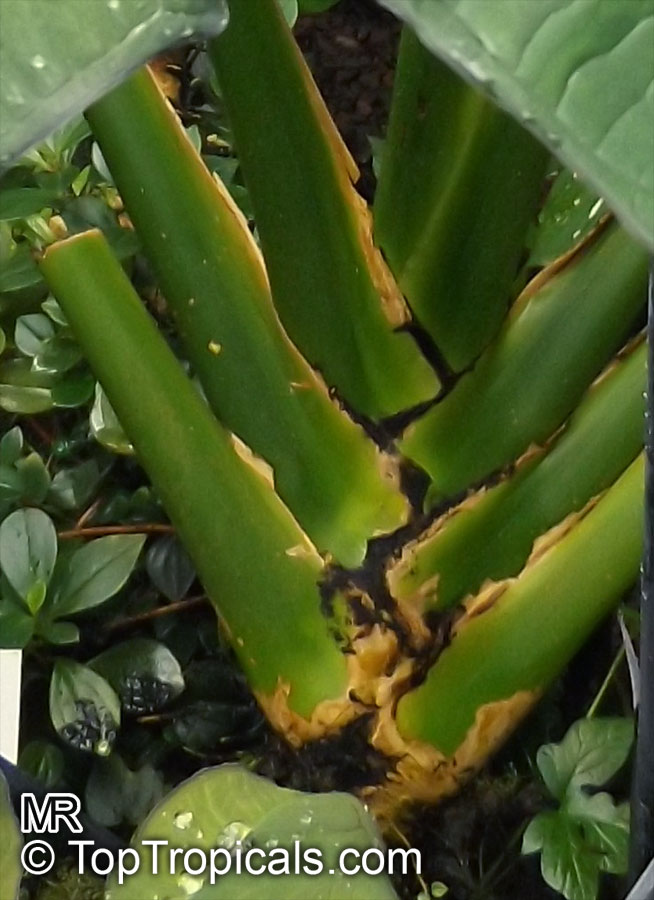Cyclanthaceae - Botanical Family
Top Tropicals Plant Encyclopedia
| Number of plants found: 8 |
Botanical name: Carludovica palmata
Common names: Panama Hat Plant, Toquilla Palm
Family: Cyclanthaceae
Origin: Central America





Carludovica palmata is not a true palm. Its leaves are different from the leaves of true palms, and unlike true palms it does not develop a woody trunk.
Botanical name: Carludovica sp.
Common names: Carludovica Palm, Jungle Drum
Family: Cyclanthaceae
Origin: America, Peru and Colombia





Carludovica sp. is a low-growing, palm-like stove plant. The flowers of the species are separate sexes, arranged in a cylindrical spiral form and close together in small squares. Its leaves are stiff and deeply divided into two to five divisions. It is a very ornamental species and can be used as a beautiful tropical garden addition.
Carludovica sp. prefers full sun exposure and warm temperatures of at least 55 degrees in USDA zone 10-11. It thrives best in a soil mix of two parts peat and one part sandy loam and should be kept lightly moist throughout the growing season. Additionally, it should be pruned regularly in order to keep its growth under control. For optimal growth, these plants should be placed in containers with well-drained soil.
This species is native to tropical regions of South America including Peru, Colombia, and other areas. Carludovica sp. can reach heights of up to 20 feet. Its rich foliage and vibrant color will bring life and beauty to any home. Enjoy!
Botanical name: Chorigyne cylindrica
Common name: Chorigyne
Family: Cyclanthaceae
Origin: Central America




Botanical name: Cyclanthus bipartitus
Common name: Cyclanthus
Family: Cyclanthaceae
Origin: Ecuador





Cyclanthus bipartitus is a unique and majestic evergreen flowering plant that is native to the wet rainforest regions of Central America. It is a small shrub that typically grows to between two to five feet in height with a leaf bladed spreading below. Most leaves grow very deeply to a bifid shape and is often spread along the length and width of the shrub. In terms of its inflorescence, it bears a stunning spadix which holds an eye-catching disclike arrangement of the flowers. The petals of the Cyclanthus bipartitus flowers when in full bloom, are a vibrant yellow-orange on the outside and a relatively deeper, rich orange on the inside.
When it comes to propagating and growing this beautiful flowering plant, it can be easily be done in regions with mild climates of USDA Hardiness Zone 9-11. Cyclanthus bipartitus prefers to be grown in moist and shady environment with some protection from direct sunlight while still enjoying plenty of regular watering. This delicate flower can be grown both in zones with mild temperatures as well as cooler climates but care should be taken to select a wider and deeper pot to ensure adequate aeration and allowing the plant to root in enough. For cooler regions, a potting mix with a blend of loam, peat and perlite should be used to give the plant the necessary insulation when cooler temperatures come in. Further, an all-purpose fertilizer specific to acidic and slightly alkaline soils should be used every spring to ensure all necessary nutrients are provided to the plant.
Cyclanthus bipartitus is an excellent choice for any landscape or garden due to its bright and exotic colors, low maintenance and ornamental foliage. It is a perfect specimen for small gardens and hedges, providing a great focal point to any garden setting.
Botanical names: Dicranopygium atrovirens, Carludovica atrovirens
Common name: Dicranopygium
Family: Cyclanthaceae
Origin: Colombia






Botanical name: Dicranopygium stenophyllum
Common name: Dicranopygium
Family: Cyclanthaceae
Origin: Ecuador






Dicranopygium stenophyllum, or Dicranopygium, is a small plant that is native to Ecuador. This attractive plant has a strong scent of ripe raspberries, and its open inflorescence can be appreciated briefly. The blooms produce a wonderfully fragrant scent in the early morning and are ephemeral in nature. Growing typically 2-5 ft in height, this versatile shrub can grow in many conditions. It prefers partial to full shade, with regular to moderate water levels. This plant is best suited to USDA Plant Hardiness Zones 9-11, and can be grown in pots in cooler climates.
For optimal growth of the Dicranopygium, ensure that it is kept in partial to full shade and watered regularly to moderately. When planting in a pot in a colder climate, ensure that the crown of the plant is at the soil surface with a layer of mulch to protect from harsh winter winds and temperatures. This will help to keep the roots from freezing in winter, leading to better health and blooms come springtime. Feel free to fertilize at the end of winter for a boost of nutrients to help the Dicranopygium thrive. Additionally, be sure to use well-draining soil and to keep the plant in an area of good air circulation to prevent fungus or mold from forming. With the proper care, the Dicranopygium can be a wonderful addition to any garden and will reward you with its fragrant blooms in the early morning hours.
Botanical names: Ludovia lancifolia, Carludovica lancifolia, Carludovica disticha
Common name: Ludovia
Family: Cyclanthaceae
Origin: Central America






Ludovia lancifolia is a small shrub, ranging from 2-5 feet in height, native to Central America. It has a unique feather-like leaf pattern, made up of green and yellow stripes, and produces cream-colored blooms. It is often grown as a houseplant and planted in outdoor gardens due to its distinctive foliage. This shrub prefers a sunny to semi-shady location but can also tolerate partial shade.
For best results, Ludovia lancifolia requires regular watering. During the summer and spring, keeping the soil lightly moist is best, however, during the winter months, the plant should be watered less, about once a week, so that the soil remains just moist. Although it prefers regular, moderate waterings, the plant is highly tolerant of dry air, allowing it to thrive in both humid and dry climates.
In mild climates, this plant can be grown outdoors in zones 9-11, however due to its tropical origin, cold and frost will kill it. If grown in a pot, ensure it remains in indirect sunlight and bring it inside during cold winter months and frosty nights. If left outside, ensure the location is sheltered, and snow or frost cannot easily reach it.
Though Ludovia lancifolia requires regular watering and some protection from cold weather, it is easy to grow and maintain and a perfect addition to your garden, porch, balcony, or indoor decor. Houseplant lovers and gardeners alike enjoy this unique and vibrant shrub, which has a unique palm-like appearance and can bring some tropical flair to any outdoor or indoor space. With proper growing and plant care, this plant can last for many years.
Use link to repeat this search:
https://toptropicals.com/cgi-bin/garden_catalog/cat.cgi?search_op=and&keyword_op=and&language=e&family=Cyclanthaceae
&number=10&no_change_lang=1&user=tt&sale=1&first=0
